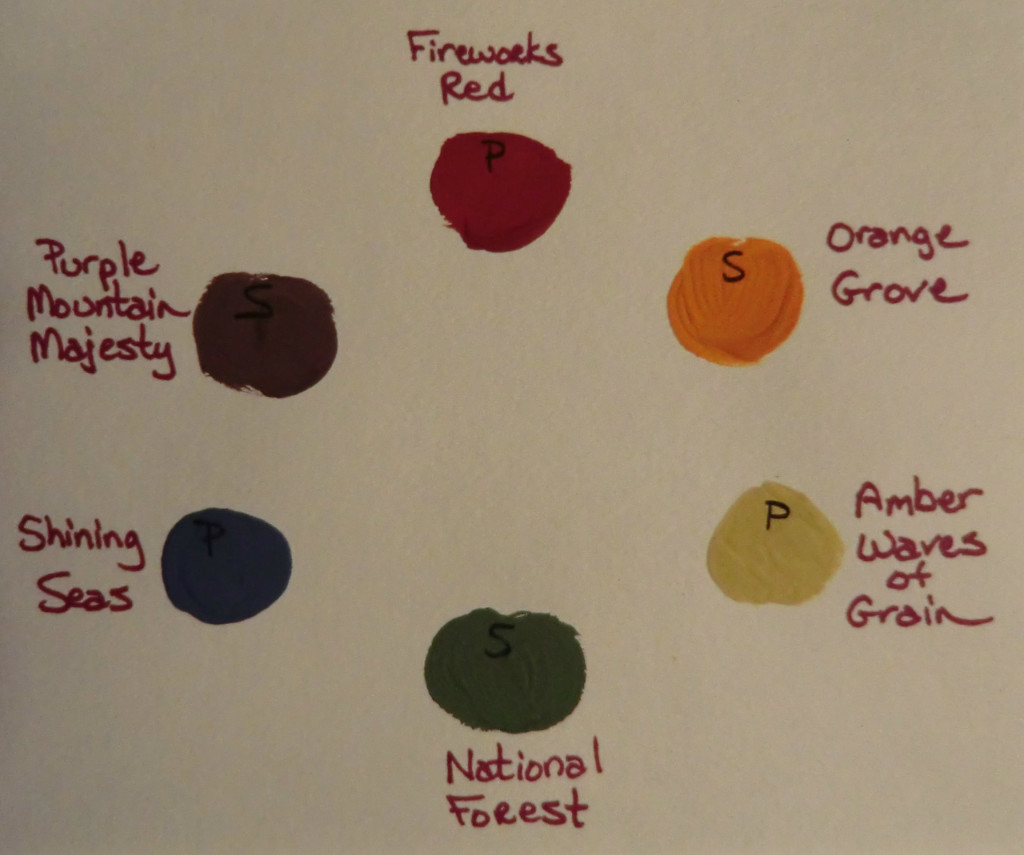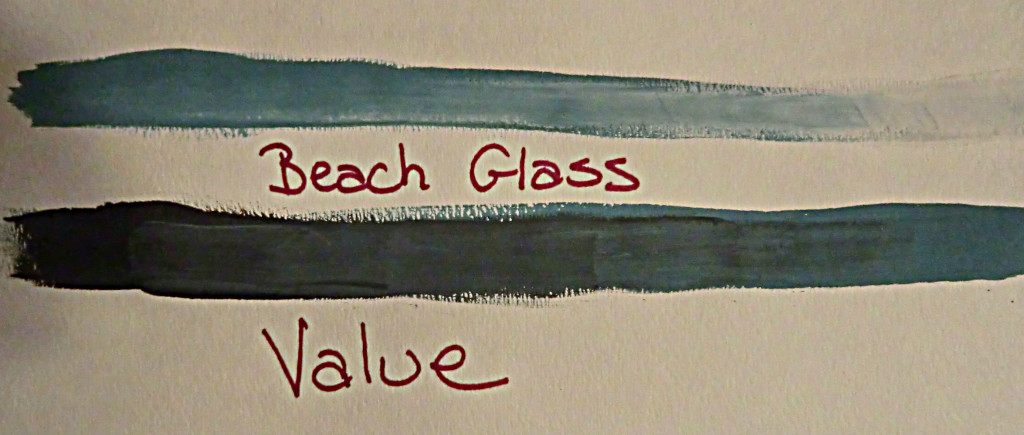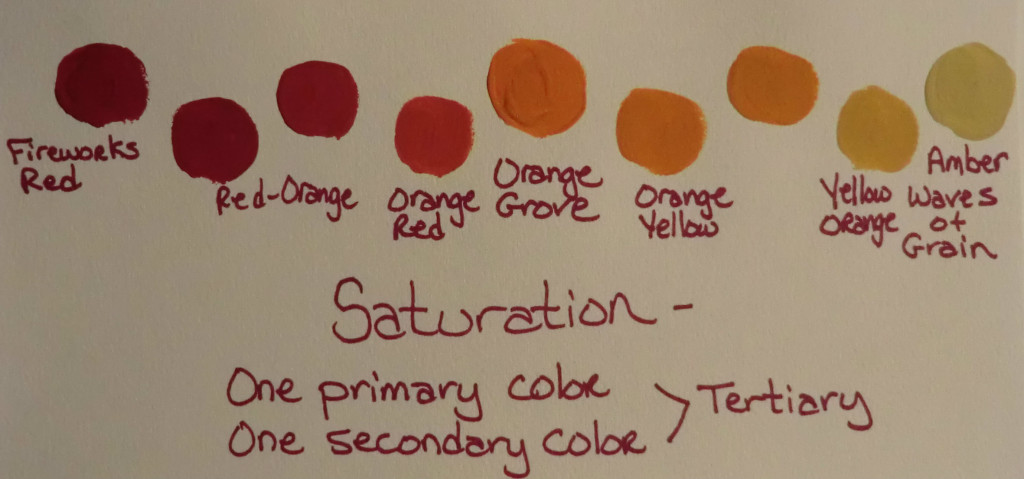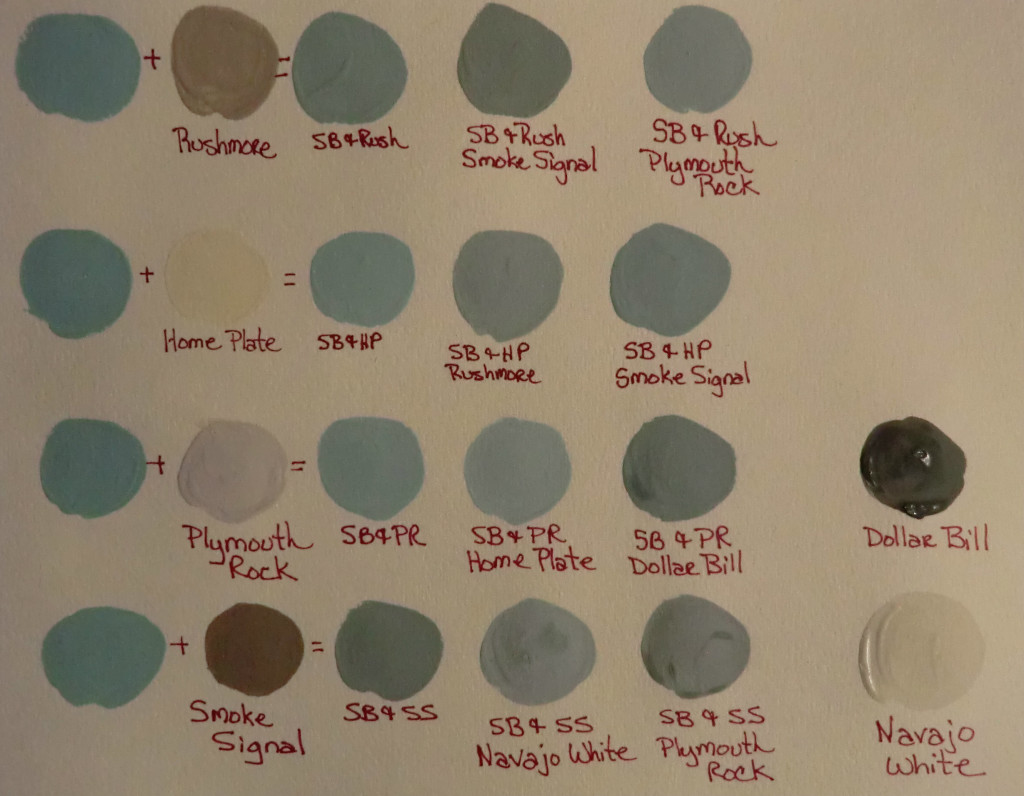I love color and am often asked how I come up with my custom colors. The ability to mix colors successfully, or keep adding or subtracting certain hues until I achieve what is in my head, did not come naturally. There is a science called color theory and it is easy if you keep it simple. It also can be a lot of fun if you’re like me and can practice it every day.
Here’s my materials list:
American Paint Company colors:
Shining Seas
Fireworks Red
Amber Waves of Grain
Uncle Sam
Lincoln’s Hat
Surfboard
Rushmore
Home Plate
Smoke Signal
Dollar Bill
Navajo White
Various paint brushes
measurer or a good eye
Water color Paper
There are three basic color theory principles that I take into consideration to create custom colors within our American Paint company palette. So take out your paints, a couple of brushes and join me for some APC creative freedom!
Principle number one is hue. Hue is defined in many ways. It is the most obvious characteristic of a color. The three colors of the pure spectrum are red, blue and yellow. They are the three true colors by which every other color can be made and are often referred to as our primary colors.
Mix two primary colors to create the three secondary colors. Yellow and Blue = Green, Blue and Red = Purple, and Red and Yellow = Orange. Now you begin to see all of the possibilities to create new colors and begin to see one or more colors within a color.

When mixing paint colors it is always good to know that complementary colors, those that sit opposite each other on your color wheel, always neutralize each other. Depending on the pigment of a product, they will turn some shade of grey or brown.
Next I will introduce you to Value. Value is the lightness or darkness of a specific color. It adds huge possibilities to the creation of new colors as you can see below.
Lastly, saturation refers to the dominance of hue in the color or how much color is in a color. I have created ratios of one color plus Uncle Sam or white to show how saturation can be used to create an infinite array of hues.
When you are looking at mixtures like those below, you can see that there are various ratios of red and yellow in each of the colors shown.
Now on to some custom colors. In the examples below I have taken one color, an American Paint Company favorite, Surfboard and started by adding an equal amount of one additional color. In the first example I added an APC staple neutral called Rushmore. As you can see it created a nice soft French type blue. In the next color an equal amount of Smoke Signal, a darker grey that I see some green in, was added. It created a more muted blue green which is a favorite of many decorative painters. The last example takes us back to our original mixture of Surfboard with Rushmore in equal amounts with the addition of Plymouth Rock, our light soft grey. The Plymouth Rock lightened up our original color creating a soft light blue, also a favorite.
As you continue to look at the variety of colors that can be created by using one color with our various neutrals hopefully you will begin to see all of the possibilities available to you. Now go back to our color principles and consider adding light or dark to change the value of your colors. Or, consider altering the saturation and just by using these few color choices we can create hundreds of new colors. Now show us what you can do.

Post courtesy of Cheryl

wow, what a great tutorial. Thanks for breaking down the terminology and teaching us novices some great basic skills and knowledge. I am loving this paint more and more as I learn more and more from the website. Thanks again. Karen
Thanks tor sharing informatiom